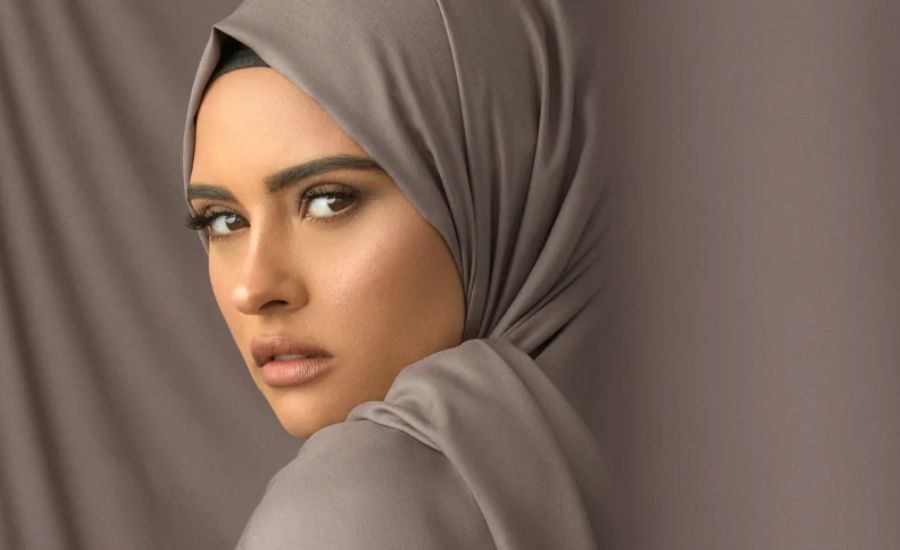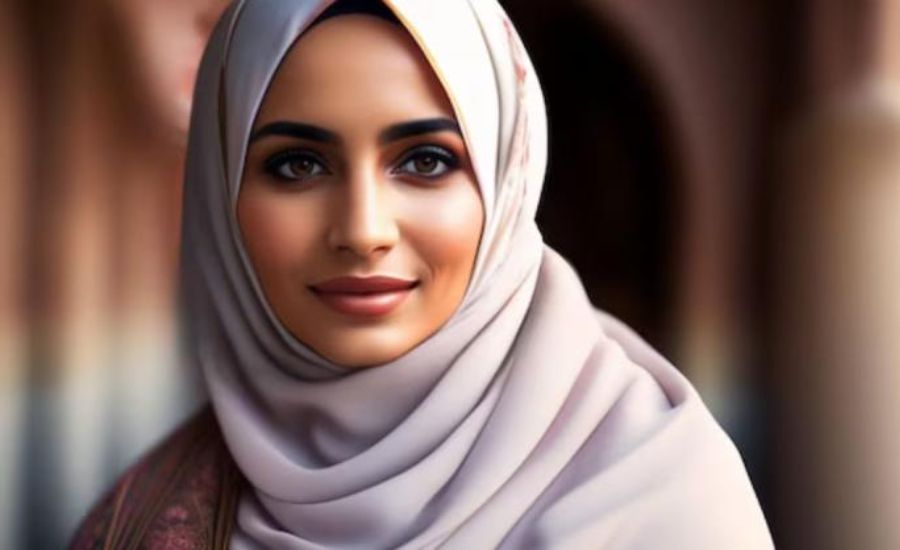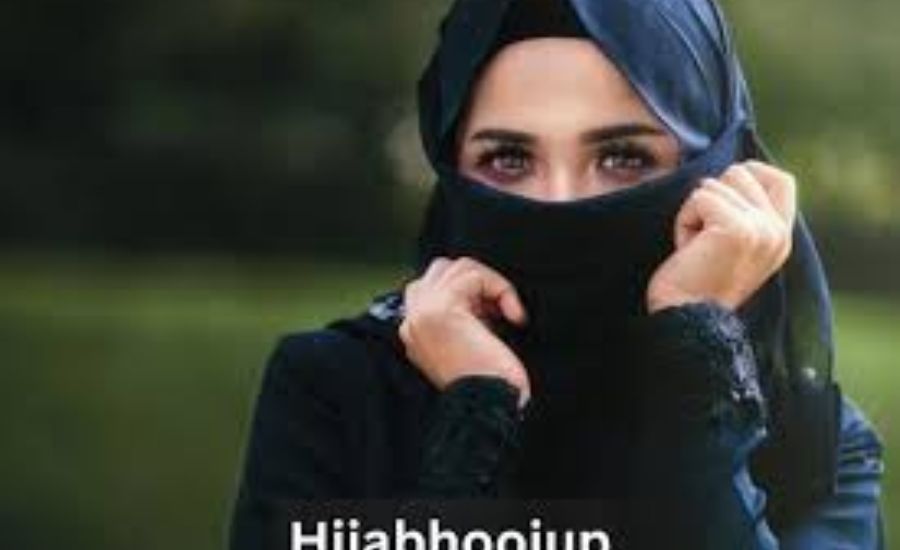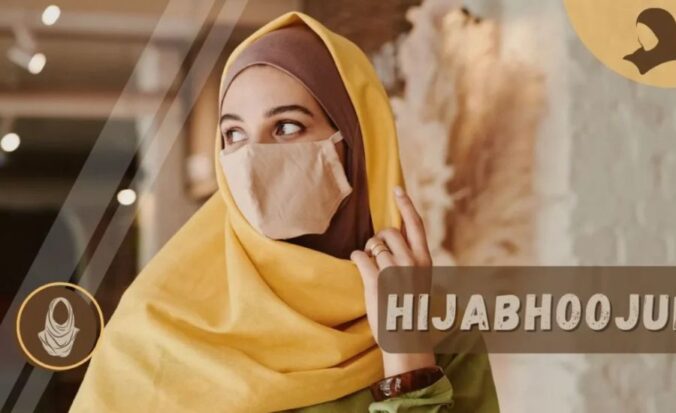Introduction to Hijabhoojup
The fashion world has undergone a significant shift in recent years, with a growing focus on diversity and inclusivity. One of the standout trends in this movement is the rise of “hijabhoojup,” a unique blend of traditional Islamic modest wear and modern fashion influences. This trend gives Muslim women the opportunity to express both their faith and personal style, merging cultural values with contemporary aesthetics.
Hijabhoojup isn’t just a passing trend—it’s a fresh take on modest dressing, celebrating creativity and cultural expression. It has allowed women to adapt their wardrobe to reflect their individuality, while still honoring their religious and cultural traditions. In this article, we’ll explore how hijabhoojup has evolved, the key elements that define it, and its growing influence on the fashion industry today. From its early beginnings to its widespread acceptance, hijabhoojup is transforming the way modest fashion is seen and embraced worldwide.
What is Hijabhoojup?

The innovative idea of hijabhoojup combines the traditional hijab with the term “hoojup,” which was coined to denote modern, stylish, and practical modest clothing. In contrast to conventional hijab styles, hijabhoojup creates fashionable yet modest ensembles by combining a variety of textiles, colors, textures, and contemporary accessories. Muslim women are empowered by this movement to use fashion to express their individuality while adhering to their religious beliefs.
The main goal of hijabhoojup is to transform the hijab from a simple accessory into a striking focal point that improves the overall ensemble. Hijabhoojup promotes the idea that modesty and style may coexist together, therefore it is no longer necessary to choose between the two. In the field of modest fashion, this movement encourages originality, adaptability, and creativity while providing a novel viewpoint on how women can express themselves via their attire without compromising their morals.
The Origin of Hijabhoojup
The term “hijabhoojup” is not found in conventional dictionaries or textbooks. It is a synthesis of concepts and cultural influences that has gained popularity in the fields of social media, fashion, and individual expression. Despite having no particular cultural or geographic origins, hijabhoojup has become popular among people who like the harmony between modesty and contemporary fashion.
The fact that hijabhoojup is about more than just looking good distinguishes it from other fashion fads. It is an approach to self-presentation that stays loyal to your ideals while reflecting your convictions, sense of style, and self-assurance. Making your own personal brand that says, “This is me, take it or leave it,” is comparable to that. It is a strong manifestation of uniqueness that daringly and imaginatively combines fashion and religion.
The Intersection of Modesty and Fashion
The way that “Hijabhoojup” reconciles modesty and style is one of its most notable features. The hijab is a potent symbol of identity for many Muslim women, and it goes beyond simple religious observance. Women’s attitudes toward the hijab and other modest clothing choices are changing along with fashion.
The idea that modesty entails forsaking flair has been dispelled in recent years by the rise of modest fashion. A growing number of fashion designers and influencers are producing collections for people who wish to dress modestly without sacrificing flare or unique flair. Here’s where “Hijabhoojup” is useful. Women can wear the hijab in a way that seems both new and stylish while adhering to their morals by combining contemporary cutting, vivid colors, and creative designs. Women are empowered to proudly express themselves through their dress because of the ideal harmony between tradition and contemporary.
The Impact of Social Media on Hijabhoojup
The emergence of hijabhoojup has been greatly aided by social media, which gives Muslim women a platform to communicate with like-minded individuals and display their innovative hijab styles. Women now find it simpler to follow influencers who support the hijabhoojup movement, locate products that share their ideals, and learn new ways to style their hijabs thanks to platforms like Instagram, YouTube, and Pinterest.
By posting their hijabhoojup ensembles, Muslim fashion bloggers and influencers have amassed sizable followings on Instagram. These ladies inspire people to embrace their faith and personality by using their platforms to show that modesty and personal flair can coexist.
With so many lessons and style advice for women who are keen to learn more about the trend, YouTube has also developed into a central location for hijabhoojup inspiration. These films encourage women of all ages to get creative with their appearances by providing simple-to-follow directions on how to create a range of hijab styles.
Hijabhoojup has become more than simply a fashion trend thanks to social media; it is a worldwide movement that empowers Muslim women to express themselves boldly while upholding their modesty values.
A Cultural Reinterpretation: How “Hijabhoojup” Reflects Modern Identity
A cultural movement in how Muslim women are redefining their identities in the twenty-first century, “Hijabhoojup” is more than just a fashion fad. Many people view the hijab as a means of expressing their identity in a society that frequently forces them to adhere to conventional ideals of beauty and style, in addition to being a symbol of their faith.
Through “Hijabhoojup,” Muslim women are discovering a fresh perspective on the hijab as a tool for empowerment rather than a limitation. The opportunity to add contemporary styles to a classic garment like the hijab is empowering in a time when individual expression is highly prized. This change creates a special area for self-expression by enabling Muslim women to strike a balance between their desire to embrace modern fashion and their religious beliefs.
Furthermore, “Hijabhoojup” is a component of the broader worldwide trend in fashion toward inclusivity and diversity. The fashion industry has been under fire for years for underrepresenting some demographics, especially minorities. The popularity of phrases like “Hijabhoojup” and the emergence of modest fashion represent a major step in the direction of more inclusive fashion venues where women from all walks of life may choose apparel that respects their individual identities and values.
Sustainability and Ethical Considerations

As the hijabhoojup movement grows, there’s been an increasing focus on sustainability and ethical production practices. Both consumers and designers within the community are becoming more conscious of the environmental impact of their fashion choices. There is a rising emphasis on using eco-friendly fabrics, adopting ethical manufacturing processes, and supporting fair trade practices.
Sustainable fashion has started to influence hijabhoojup, with many designers turning to organic cotton, recycled materials, and eco-conscious textiles. Modest fashion brands are also taking steps to ensure ethical production, ensuring that workers are treated fairly, paid adequately, and work in safe conditions.
By embracing sustainability, the hijabhoojup community is not only promoting environmental awareness but also fostering a sense of responsibility within the fashion industry. Through thoughtful decisions about sourcing materials and production methods, hijabhoojup is playing a role in shaping the future of modest fashion in a way that aligns with ethical and eco-friendly values.
The Meaning of Hijab
The hijab is a headscarf worn by many Muslim women, covering the hair, neck, and sometimes shoulders. It serves as a symbol of modesty, faith, and identity. Beyond being a simple piece of fabric, the hijab represents a woman’s personal beliefs and values. While its origins are rooted in religious teachings, it is also deeply connected to cultural traditions and practices.
The Mystery Behind Hoojup Unlike the hijab, “hoojup” is a term that isn’t widely recognized. It may be a creative or playful adaptation, bringing a new dimension or meaning to the traditional headscarf. Hoojup could symbolize a blend of traditional and modern elements, reflecting an effort to redefine or reframe the hijab in a contemporary context. It might represent a style, attitude, or movement within certain communities that seek to modernize traditional practices while still maintaining their core values. This concept of “hoojup” reflects the evolving nature of fashion and identity, blending the old with the new.
Comparing Hijabhoojup to Other Trends
Hijabhoojup distinguishes itself from other fashion trends that combine modernism and modesty in a way that makes it stand out in the competition. Hijabhoojup provides a more adaptable and customized approach than standard hijab styles, which frequently adhere to rigid rules.
For example, mainstream hijab fashion blogs prioritize norms above originality, even if they frequently offer traditional styling advice. Conversely, hijabhoojup promotes self-expression and experimentation. It is more important to forge your own route than to adhere to a predetermined formula.
“Modest fashion,” which emphasizes fashionable ways to dress modestly, is another trend that is comparable. Hijabhoojup, on the other hand, goes farther. It is about sharing your own narrative, not just about hiding it. It is a less strict, more imaginative method that lets you mix and match and experiment with different styles in a way that feels right for you. It is about accepting individualism and modesty in a novel and intimate way.
Designers and Brands Leading the Way

In the modest fashion sector, a number of designers and fashion labels have gained notoriety by producing collections for women who wish to wear modestly without compromising style. These designers frequently combine contemporary aspects with traditional modest apparel to create collections that appeal to a wide range of consumers.
For Muslim ladies looking for fashionable and superior modest apparel, brands like Haute Hijab, Modanisa, and Aab have emerged as favorites. By providing modest yet fashionable clothing, these firms exemplify the essence of “Hijabhoojup,” enabling women to express their individuality while adhering to their moral principles.
In the meantime, more inclusive clothing lines are being introduced by major brands that are starting to recognize the need for modest design. The expanding influence of “Hijabhoojup” and the broader modest fashion movement, which is calling for more diversity and representation in the fashion industry, are directly reflected in this change.
Facts:
- Hijabhoojup is a unique blend of traditional Islamic modest wear (hijab) and modern fashion influences, allowing Muslim women to express both their faith and personal style.
- The term “hijabhoojup” combines the hijab (headscarf) with “hoojup,” symbolizing modern, stylish, and functional modest clothing.
- Social media has played a significant role in the rise of hijabhoojup, offering Muslim women a platform to share and discover creative hijab styles and fashion inspirations.
- Hijabhoojup is part of a broader movement toward modest fashion, which has grown to challenge the belief that modesty and fashion cannot coexist.
- Many designers and brands, such as Haute Hijab, Modanisa, and Aab, have become popular for offering stylish and modest clothing that embodies the essence of hijabhoojup.
- Sustainability has become an important focus in the hijabhoojup movement, with brands prioritizing eco-friendly fabrics and ethical production practices.
- The hijab represents modesty, faith, and personal identity, serving as a symbol of a woman’s beliefs and cultural values.
- Hijabhoojup provides a more flexible, creative approach to modest fashion compared to traditional hijab styles, focusing on personal expression and experimentation.
Summary:
Hijabhoojup is a growing trend that blends traditional Islamic modest wear with contemporary fashion, enabling Muslim women to express their individuality without compromising their faith or modesty. The movement encourages creativity and personalization in how women wear their hijabs, transforming it from a simple accessory into a statement piece. Social media platforms have played a key role in the popularity of hijabhoojup, providing spaces for women to share their styles and inspire others. The trend is part of a broader modest fashion movement, which aims to show that modesty and modernity can coexist beautifully. Additionally, sustainability and ethical fashion practices are becoming increasingly important within the hijabhoojup community, with designers opting for eco-friendly materials and fair trade practices. Overall, hijabhoojup is shaping the future of modest fashion by promoting diversity, individuality, and empowerment for Muslim women worldwide.
FAQs:
- What is hijabhoojup?
- Hijabhoojup is a fashion trend that merges traditional Islamic modest wear (the hijab) with modern, stylish, and functional clothing elements. It empowers Muslim women to express both their faith and personal style.
- How does hijabhoojup differ from traditional hijab fashion?
- Unlike traditional hijab styles, hijabhoojup embraces modern cuts, colors, textures, and accessories, creating more flexible and personalized looks. It encourages experimentation, allowing women to mix and match styles while staying modest.
- What role does social media play in the hijabhoojup movement?
- Social media platforms like Instagram, YouTube, and Pinterest have been instrumental in spreading the hijabhoojup trend. Influencers and fashion bloggers share creative hijab styles, styling tips, and outfit inspirations, making it easier for women to embrace the trend.
- Is hijabhoojup only for Muslim women?
- While hijabhoojup is particularly relevant to Muslim women who wear the hijab as part of their religious and cultural practices, the trend encourages self-expression and creativity, and can inspire women from various backgrounds to explore modest fashion.
- How does hijabhoojup relate to sustainability?
- The hijabhoojup movement is increasingly focused on sustainability, with designers using eco-friendly fabrics, recycled materials, and ethical production practices to minimize the environmental impact of modest fashion.
- Which brands support the hijabhoojup trend?
- Brands like Haute Hijab, Modanisa, and Aab offer stylish, modest clothing that aligns with the hijabhoojup ethos. These brands allow women to express their individuality while staying true to their cultural and religious values.
- Can hijabhoojup be considered a cultural movement?
- Yes, hijabhoojup represents a cultural reinterpretation where Muslim women are redefining their identities, blending modern fashion with traditional values, and empowering themselves through self-expression without compromising their faith.
Read more Information about Lifestyle at Visit SearchKnowledge.org

Leave a Reply